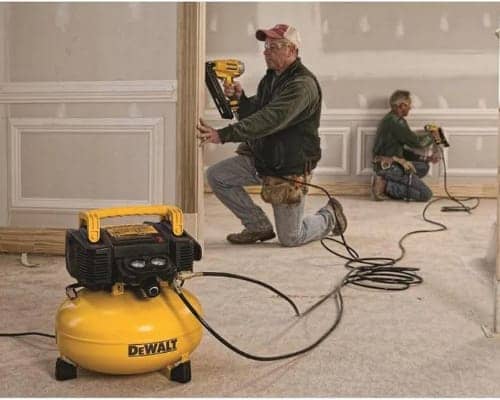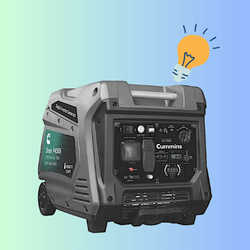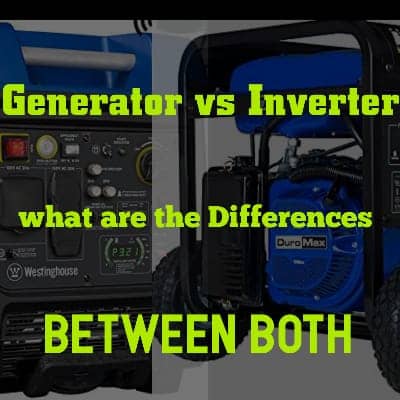
When tackling more projects around my garage workshop, I quickly realized my little pancake compressor wasn’t cutting it anymore. It was maxing out left and right between shooting nails, blowing off sawdust, and firing up more extensive air tools. But with so many compressor options on the market, how was I supposed to know what size to get?
After wearing out more than a few air hoses in frustration, I decided it was time to get serious about selecting a compressor better matched to my needs. But there were a lot of important factors to consider beyond just size – things like pressure output, usage patterns, and horsepower ratings. Where should a beginner even start when picking their pushy piston pal?
In this blog, I’ll share the key questions I asked myself during my hunt for the right fitting air compressor “What size air compressor Should I Buy”. From accounting for all my air-sucking tools and their demands to assessing my typical work times and cycles – every detail helped me zero in on the ideal size. I’ll also break down some important specs to compare so you can stop stressing and start compressing confidently. By the end, choosing the perfect partner for your pneumatic pursuits will be a breeze.
What size air compressor Should I Buy?
Understanding Air Compressors
When I was in high school, I worked part-time at an auto repair shop, and we used air compressors all the time. Whether we needed to inflate tires, power impact wrenches, or even use an airbrush, the compressor was crucial for getting jobs done. But to be honest, I didn’t really understand how it worked. All I knew was that flipping the switch made air come out!
As someone who’s used compressors for years but has yet to really learn the basics, I decided it was time to educate myself. Here’s a brief breakdown of the main components and how an air compressor functions in simple terms.
An air compressor takes power – usually from an electric motor or gas engine – and converts it into compressed air energy. This motor drives a piston inside the compressor tank that sucks in normal air through an intake valve. The piston then compresses the air, raising its pressure. That high-pressure air gets stored inside the tank until it’s needed.
Turning on a tool like a nail gun opens a valve on the tank, releasing the compressed air. This potent airpower is then piped over to the tool to do things like drive nails or spray paint. It’s prettyHow a squirrel cage motor packs so much utility into a small package, huh?
Factors to Consider When Determining the Size
1. Air Demand
One of the most important decisions when buying an air compressor is choosing the correct size. Before shopping, it’s important to take inventory of how you plan to use your compressor so you don’t end up with one that’s too small or too big for your needs.
The first thing to consider is the air demand of the tools you want to power. Just like appliances have wattages, air tools will specify their air consumption in cubic feet per minute (CFM). This tells you how much-compressed air it takes to operate them.
Taking stock of your gear is critical. Do you primarily need it to air up tires, or will you be using it for tasks like sanding, nailing or auto body work that requires more airflow? Please make a list of every tool you envision using with its specs so you know the maximum CFM draw.
Remember that running multiple tools simultaneously increases demand. A framing nailer may only need 3 CFM, but run it with a Brad nailer, and you’re looking at 6 CFM total output required from the compressor.
With a handle on your tool CFM needs, you can then size the compressor tank properly. Whether you choose a small pancake compressor or a full-size unit, matching the CFM rating to your workload will ensure your compressor keeps up without wasting money on the capacity you don’t require. Proper sizing now prevents air grating later!
2. Understanding Your Air Compressor’s Duty Cycle
One specification that can really help size up your compressor needs is something called the “duty cycle.” Simply put, it’s a rating of how long your compressor can comfortably run vs rest over a certain period of time.
Say you have a compressor with a 25% duty cycle. That means out of every 10 minutes, it’s designed to run continuously for 2.5 minutes before needing a 7.5-minute cooldown. Going past that threshold risks overheating or premature wear on internal components.
Knowing your planned usage pattern is key to heeding a compressor’s duty cycle advice. If you’re a DIY-er who only occasionally tops off a basketball or uses some spray paint, even a small unit with a low-duty cycle will likely work great.
Contractors or hobbyists running air tools back-to-back all day long need the breathing room of a higher-duty cycle compressor. They allow for constant air demands without worrying about overtaxing the motor.
When shopping, note the duty cycle to get a compressor that aligns with your expected run times. That way, you avoid frustration from an underpowered machine seizing up, and you save money by not buying more compressors than you require.
3. Pressure Requirements
In addition to sizing up air capacity needs, another important spec is the pressure output of a compressor. Just like voltage in electricity, air tools require specific pounds per square inch (PSI) to power up correctly.
Take note of maximum pressure levels in tool manuals before shopping. Things, like blow guns for dusting, may only need 90 PSI, while pneumatic nailers or spray equipment could call for over 100 PSI to perform their jobs.
A compressor rated for just 75 PSI won’t cut it if your stapler requires 100. You’ll be frustrated with a weak performance from under-pressurized airflow.
On the other hand, there’s no need to pay extra for a compressor that pumps out 150 PSI if your arsenal of air-driven gadgets maxs out at 115 PSI. The added cost doesn’t benefit you.
Tools may not latch, cycle, or spray correctly when pressure is too high or too low. For good results and longevity of your equipment and compressor, be sure the PSI output matches your needs. Pressure is important with compressors, as with life, but only what you require!
4. Tank Size
When shopping for an air compressor, you’ll undoubtedly see varying tank sizes among models. But how do you know if more reservoir real estate is worth the extra cost? Let me share a few insights on optimizing this often-overlooked aspect.
A compressor’s tank acts like a giant air battery, storing compressed air on hand until your tools tap into the supply. With tools that draw air intermittently, like spray guns, a larger tank means less on/off cycling of the motor over time. This reduces wear and boosts efficiency.
Conversely, jobs requiring constant airflow, like sanding, negate the benefits of a massive tank. Instead, focus on CFM and duty cycle for sustainability.
Larger tanks can also smooth out surges from multiple tool use without labouring the compressor. This stops that annoying bogging down effect and keeps work flowing.
Of course, huge tanks designed for continual heavy industrial use would be wasted on DIYers. Find the sweet spot that matches your project load without busting the budget. Proper tank sizing brings both performance and longevity gains to your air-powered endeavours. Check our recommended top DEWALT air compressors.
5. Horsepower Matters
So you’ve checked airflow needs, pressure levels and tank sizes – but there’s one more key rating to uncover before making your compressor purchase decision. That is the horsepower powering the whole operation.
Like choosing a vehicle by its engine output, a compressor’s rotary muscle indicates how strongly it can squeeze air molecules into submission. More horses under the hood provide mightier pressure-pumping potential.
However, it’s not just about raw grunt. You also want to eyeball the CFM rating, which reveals the actual air-pushing productivity at different pressure levels.
A machine with high horsepower but lower throughput won’t serve you as well as a lower HP model optimized for your workload requirements. And conversely, underpowered units will need more support under heavy or prolonged use.
Cross-referencing horsepower with flow specs allows you to pick the compressor perfectly tailored to your tool arsenal without wasted capacity. Extra horses are exciting, but they only strain your wallet if they are not needed for the tasks. Get the right balance of push and output for trouble-free compression.
Conclusion
Hopefully, this guide has helped break down the important factors to ponder when partnership shopping for an air compressor.
With these pointers in mind, you’ll be well-equipped to select a compressor compatible with your applications for years of reliable, efficient service. Avoid future frustration and find the ideal pressurized pal that empowers your pneumatic passions without breaking the bank. Happy compressing!



